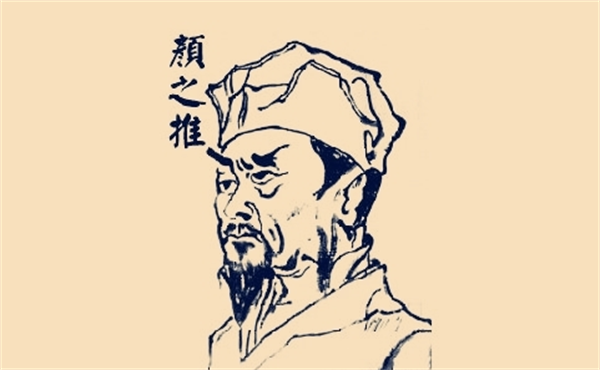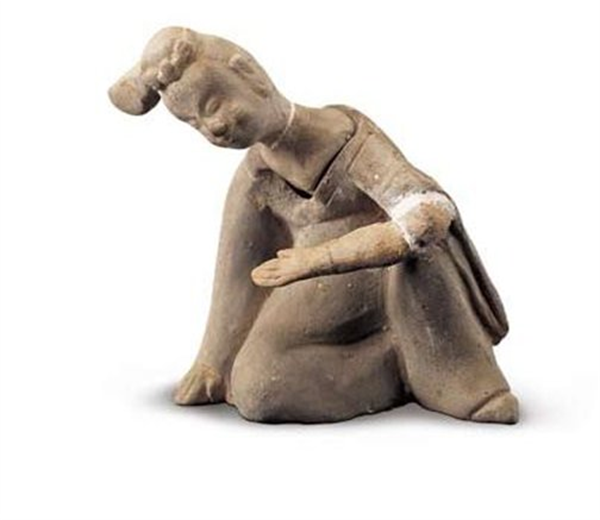Center of North-south Cultural Convergence
In the Wei, the Jin, the Northern and Southern dynasties, the southern and northern regions of China had been at loggerheads except a short-term unification in the Western Jin Dynasty (265~316AD). Great differences in economy and culture emerged between the north and south of China. However, the exchanges of economy and culture between the north and south of China had been going on since the appearance of loggerheads. After the inception of the Northern Zhou Dynasty (557~581AD), Chang’an City was not only the cultural center of north China but also the most developed center for ideology and culture at that time.
In general, the culture of Shaanxi area with Chang’an City as its center was in the typical northern style, which preserved the characteristics formed in the Zhou and Qin dynasties. The culture in northern style stressed large scale, high level, diversification, energy and simplicity. Under the influence of the ethnic groups living in the north of China, the elements like roughness and bravery were added to the northern culture of China. With nearly 400-year relatively stable and peaceful environment in the south of China, literary writers enjoyed showing off their literature skills and admiring the beauty of nature. The intellectuals in the south of China formed the culture with a typical feature of southern China. The style was luxuriant and fresh at the same time. There was a great difference in the culture between the north and the south of China. However, the difference promoted the cultural exchanges between the north and the south of China. In that period of time, the exchange and fusion of the culture on the two sides were quite frequent. For example, Buddhist culture was spread from Chang’an City to the south of China. The minorities living in the north had gradually discarded the narrow-minded and stupid thoughts, like “I am a Hun and I have no interest in the ballads of the Han nationality”. They began to eagerly learn Confucianism in the south of China, which was regarded as the orthodox culture, and also highly respected intellectuals.
With Yu Xin and Yan Zhitui coming to Shaanxi area, the isolated culture in the north and south of China begun to communicate and collide with each other, finally fruitful achievements were achieved. Influenced by the northern culture, the two writers’ writing style and subject matters had changed a lot and reached a new height. It can be called a great leap in literature creativity in Chang’an City.
Yu Xin is a famous literatus from the Southern Dynasty. His writing style belongs to the gorgeous, graceful and restrained court style. Owing to the unrest, Yu Xin came to Chang’an City by the arrangement of his destiny. Abundant historical culture, magnificent scenery and human relationship in the north opened a new door to his insight, thus his writing skill was enhanced. And therefore, his works appeared to be more masculine and less foppishly. In Chang’an City, he accomplished the epoch-making masterpiece Lament for the South. It is a lyric poem based on the writer’s own bitter life experience. Yu Xin described the ups and downs of the Liang Dynasty in his poem. Some critics made comments on Yu Xin’s Lament for the South and Qu Yuan’s Lisao. The critics said that their poems echoed each other in a long span of time, and their works stood on the peak of prose poetry for the past 700 years. Yu Xin’s poems not only reached the peak of his time, but also pioneered the poems of the Tang Dynasty. During his stay in Chang’an, Yu Xin was just like a phoenix reincarnated from a big fire. His outlook was completely new and his writing level achieved a new height. For this great transformation, Du Fu commented that the older Yu Xin was, the more tasteful his works were. The remarks from Du Fu tell us the great leap in Yu Xin’s writing since he came to Chang’an. And Du Fu’s high opinion also exposes to us the favorable the culture environment of Chang’an in a hidden way.
Yan Zhitui was born in a scholar family with strong belief in Confucianism. His ancestor Yan Yuan is the most favorable among the four disciples of Confucius. He once served the Liang State, the Northern Qi Dynasty and the Zhou Dynasty. The Yan family had been declining without any outstanding figures making important achievements. However, since Yan Zhitui came to Chang’an, his family and he himself underwent great social changes. His ten years’ stay in Chang’an is the transitional period of his thoughts and academic views. His famous work Yan Family Instruction was composed in Chang’an City. The whole life of Yan Zhitui is full of twists and turns. At his early age, he witnessed the fall of the states in the south of China and later the regime substitution of the Northern Dynasty. These life experiences made him complicated and contradictory in mentality. He regarded his twists and turns as a tragedy, however, from the perspective of cultural exchange, we should see it as fortunate fallout in Chinese ancient culture. In other words, if he had not been to Chang’an from the south of China, if he did not experienced different cultures, if he did not make a comparison between different societies, if he did not have the experience of long journey and witnessing the substitution of regimes, his masterpiece Yan Family Instruction would never be produced. Yan Family Instruction would not have been as deep, penetrating and extensive as what we see it today.

The portrait of Yan Zhitui
After Yan Zhitui came to Chang’an City, a big influential family was multiplied there and produced many outstanding talents, which became a great event in the history of Shaanxi area. Among the members of Yan family, Yan Zhitui’s two sons, Yan Silu and Yan Minchu, are acclaimed because they were assistants of Li Yuan who was the provincial governor of the Sui Dynasty (581~618AD) before he became the first emperor of the Tang Dynasty (618~907AD). His grandson, Yan Shigu, is a highly respected scholar in the Tang Dynasty, who gave the notes to Hanshu, History of The Western Han Dynasty. In the Tang Dynasty, Yan Zhenqing, a great calligrapher and literatus, is Yan Zhitui’s fifth-generation grandson. Yan Zhenqing’s calligraphy represented the highest level of the Tang Dynasty. He can be called one of the most admired masters after Wang Xizhi (the most famous calligrapher of the Western Jin Dynasty) in Chinese calligraphy history. From the aspect of culture, his powerful, vigorous, solemn and profound calligraphy style had thoroughly reversed the aesthetic view about calligraphy. The original calligraphic style was prevailing in the south of China for a long time in the early stage of the Tang Dynasty. This shift of aesthetic view and focus of culture was started from their ancestor Yan Zhitui. That is to say, the Yan family in Chang’an started a new cultural style ever since Yan Zhitui, both in literature and history. The new cultural style achieved great success and had far-reaching influence on the Chinese intellectuals. They wrote down the most glorious chapter in the history of the Yan family. There are no other families who can match with the Yan family in the history of Chinese families. The Yan family added luster to the history of Chang’an which in turn helped the Yan family grow more influential in China. The favorable cultural environment in Chang’an and the Yan family were supplementary to each other in the Tang Dynasty.

Pottery figurine of the South Dynasties, unearthed in Ankang
The unearthed pottery figurines of the Northern and Southern dynasties demonstrated the characteristics of both in the north and the south of China. For example, the pottery figurines unearthed in Xi’an and Ankang take the maximum number in China today. The pottery figurines made in the Northern Dynasty are not only plain and rough in style but also bear a distinctive feature of the Han and Han nationalities. These pottery figurines have obvious cultural signs of the prairie and farming cultures.
The figurines made in the Southern Dynasty are exquisite in style and have merry facial expressions. The two different styles make a sharp contrast. The pottery figurines of the two different styles can fully represent the basic features and the highest level of the Southern and Northern dynasties.


